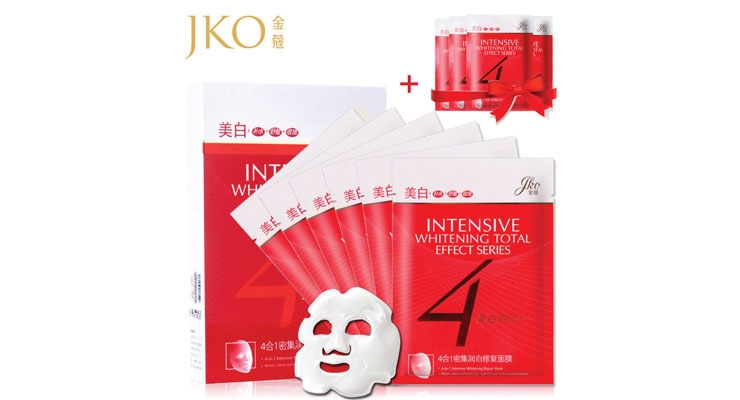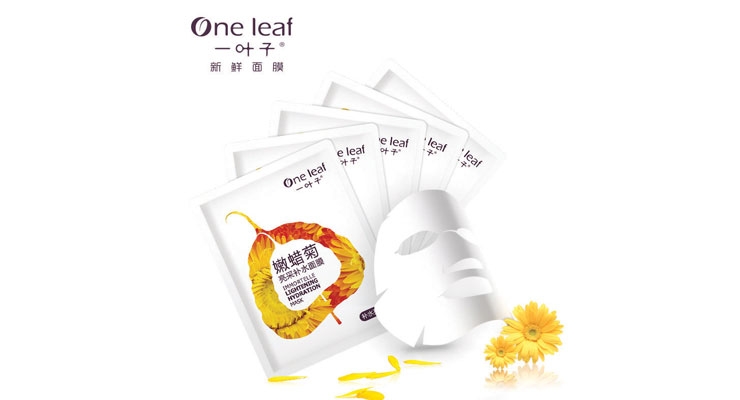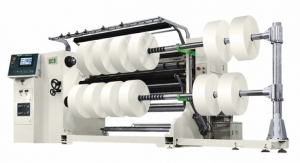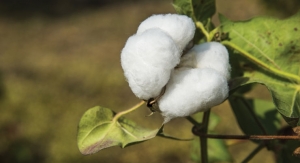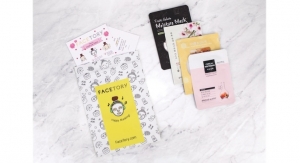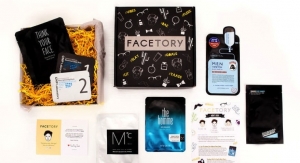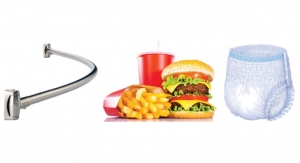Ally Dai03.27.17
In retrospective, how many industrial insiders could foresee the facial mask boom in China nearly a decade ago? And how many expected such market sensation still to be continued until now?
Ever since becoming a market sensation nearly 10 years ago, facial masks have grown remarkably quickly in China. In 2015, the market size was estimated to reach 30 billion RMB (approximately $4.4 billion) and sheet masks consumed by Chinese around 2.8 billion pieces, big enough to cover an area equivalent to 80,000 football fields, according to Nielsen.
The strength of this market has been demonstrated again. During last year’s Double 11 Festival (also known as Singles’ Day, the biggest online shopping event in China, similar to Black Friday in the U.S.), facial masks topped the best selling category list, followed by BB cream and body/hair care sets, based on the data collected across 16 major e-commerce sites (including Alibaba, JD, YHD, Suning, and Amazon) during that 24 hours, according to digital consultant company Syntun.
Right before the festival, the pre-sale data from Tmall (Alibaba’s online mall for brands) revealed that facial masks were among the top selling cosmetic categories. The market leader in this category is It’s real squeeze mask from K-brand Innisfree, receiving more than 100,000 orders in just one day.
In its 2016 Online Cosmetic Retailing White Paper, Syntun stated that facial masks remain the biggest contributor to skin care growth, accounting for nearly 40% of total online sales of the segment last year. Furthermore, the latest report from Nielsen reveals that for the first half of 2016, facial masks even led the way in sales growth across all FMCG sectors at a rate of 16%, followed by lipstick (9.3%) and bottled water (8.7%).
Diversifying to be Different
With the market getting more crowded, differentiation has never been so important and imminent for the manufacturers of facial masks.
In the earlier story Uncovering the Growth In the Facial Mask Market back in 2015, I touched upon differentiating from three aspects: 1) Formularies with actives drawing inspiration across all cosmetic categories as well as food and pharmaceutical industries and forms delivering novel sensory feelings, ; 2) Substrates varying in material sources, fibers/structures and shapes; and 3) More specific/segmented claims in terms of application occasions and target groups.
Nearly two years later, these are still deployed by manufacturers. Among all types of masks ranging from sheet and clay to gel, cream and even spray/foam, sheet masks have dominated—in both marketshare and growth rate—ever since they entered the market nearly a decade ago. The popularity of these products is expected to be maintained in the near future, largely due to increased diversification, from formulary to substrate.
For the former, whether it is emulsions, gel or suspensions, the differentiation lies largely in ingredients, particularly the actives. For the latter, fiber/fabric plays a vital role as the sheet substrate is moving beyond simply acting as a carrier to enhance or complement the skin care benefits of the formulary.
Substrate Sophistication
The fact that substrates have become an important way for sheet masks to expand and differentiate seems to make sense after all. As you can imagine, today’s consumers crave both novelty and value for the money. Which claim sounds more tempting when it comes to purchasing? “Formulary containing botanics sourced from exotic lands?” or “Substrate infused with botanics to deliver double benefits?”
Behind today’s dazzling promotions like “heavenly silk,” “feather light” or even “leaf-fiber sourced from high altitude tea with antibacterial activity,” the vast majority of the substrates used in sheet masks are actually nonwoven fabric, but varying in fibers/fiber combinations and processing technologies/shapes.
Once dominated by cotton and synthetic materials like polypropylene and nylon, fibers of nonwoven fabrics recently have been expanding and diversifying to other natural-positioned materials, ranging from lyocell (mainly Tencel from Lenzing) and cuprammonium (marketed as ‘silk’ as it mimics the appearance and skin feel of real silk), to bamboo/wood/fruit-derived ones and real silk (infusing silk-derived nanosized protein fiber into nonwoven fabric, to be accurate).
Nowadays, the game of mix and match in sheet substrates is getting heated up as we see more sophisticated fiber combinations in the market, such as bamboo+charcoal+viscose or pulp+food-grade-latex. Furthermore, substrates added with actives are emerging, like incorporating camellia oil to claim extra moisturizing or banana flower extract for soothing.
At two big beauty expos in China last year, a few interesting products with fusion substrates were on display. One of these sheet mask combines Tencel with tourmaline and organic germanium, to claim the benefits of repairing and detoxifying by emitting infrared to maintain the skin temperature between the range of 25-30°C, at which cell metabolism and microcirculation are said to be accelerated and therefore improve the absorption of actives and maximize the skin detoxification. Another one is Tercel combined with silica-encapsulated nonmagnetic powder, said to stimulate microcirculation and activate dermis and subcutaneous tissue via bio-magnetic effects, to deliver the benefits of smoothing out wrinkles and slimming the face.
Think these two are at the risk of overclaiming or unsubstantiated? Then how about a patented one? The substrate combines some natural vegetable fiber with chitosan, a versatile biopolymer already seen in medical applications. In addition to acting as a carrier, a substrate containing chitosan can possess bacteria-inhibiting properties while absorbing residual chemicals. The final product comes in the form of two separate packages for sheet and essence, which are to be combined upon application. This is to overcome the formulating difficulties and minimize the amount of the preservatives used by the manufacturer.
Apart from nonwovens’ dominance, biomaterials are on the rise as well, particularly for the products with niche positions. Bio-fibers of the substrate are produced with bacteria (mainly acetobacter xylinum) and plant-derived materials like coconut milk and grain mash via bio-fermentation technology. This type of substrate is positioned as safer and fitter with claims like “injectable/medical grade” and/or “a second skin,” as such biomaterials were initially used as artificial skin/bio addressing in medical applications.
No matter how sophisticated sheet substrates become, performance expectations can still be boiled down to the following: safety, user experience and efficacy. Specifically, the sheet materials should not be irritating to the face, it must fit properly and tightly to the face and it must be thinner, lighter and more breathable while facilitating the absorption of actives and enhancing the skin care benefits.
By varying in weight, strength, thickness/density, softness/cushioning and water absorbency, substrates are apparently up to the job of differentiation for sheet masks via materials and shapes and structures.
Then, what new directions can they go in future? They can integrate better with formulas and facilitate the controlled release of actives, Wang Pu, senior expert at the Shanghai Truly BioCosmetics company, points out. This domestic OEM/ODM manufacturer has long been well-known for its research and development capabilities in innovative cosmetics, including eye-catching facial masks produced with its patented bio-fermentation technologies.
Ultimate Directions
All in all, mega trends emerging in facial masks are largely consistent with those already existing in traditional cosmetic categories: natural/eco-friendly, safer and effective. The major obstacles to the development of this category are nearly the same as the ones confronted by today’s domestic brands across all categories, namely varying and inconsistent quality, too much similarity/lack of differentiation and too much focus on promotion. As many industrial experts pointed out, there seems to be a long and winding road to maintain and drive the prosperity of the category for domestic players.
Chinese media have been widely reporting the use of controversial and even unsafe ingredients like topical hormones and preservatives in some facial masks in recent years. The misuse of these ingredients has led the Chinese Food and Drug Administration (CFDA) to ramp up efforts to better regulate this quickly growing market as consumers have also become more aware of these ingredients.
In fact, when facial masks are mentioned nowadays, three keywords immediately jump into Chinese consumers’ minds thanks to massive media coverage—topical steroids (addictive hormones or skin opium in the mainstream media’s terms), fluorescent brightening/whitening agents and preservatives.
The issue of topical steroids first gained public attention in 2014 when Chinese state media CCTV (China Central Television) reported that a young woman suffered a serious allergic reaction after using some facial masks bought on WeChat. The subsequent investigation found that many of the facial masks available on the social platform used low-end ingredients/materials, and some of the products even reportedly contained 6000 times the level of topical steroids permitted by domestic law.
Topical corticosteroid, especially fluocinolone, has caught particular attention since then. It’s already known that the excessive use of the steroid could cause serious side effects such as subsequent dependence/addiction. When it comes to skin applications, such steroids are only allowed to be prescribed by doctors to treat inflammation such as eczema and allergies and its use cosmetics have never been legally allowed.
Tightening regulations
With media reports increasingly highlighting slack supervision of this issue, government officials began to take actions on this matter in 2015. A series of inspections have been conducted and subsequent warnings have been issued by CFDA ever since. In its official announcements, the agency reveals that those facial masks disqualified upon inspection all have been found illegally adding banned topical corticosteroids, and warns that such products could cause serious skin problems including pigmentation/melasma and atrophy. After issuing its first guideline on a standard method for identifying fluocinolone illegally added into facial masks in May (No.88.2016), CFDA widened its screening range for topical steroids in November’s inspection, announcing that 50 batches of the facial masks were disqualified as containing synthetic glucocorticoids including Betamethasone (No.140.2016).
At the end of last year, the inspection has even gone beyond facial masks and topical steroids. In its latest notice issued in December (No.170.2016), the agency announced that 60 out of 4332 batches of anti-pigmentation cosmetic products were found containing banned substances, mainly topical corticosteroids and mercury. And facial masks still make up quite a proportion (12 out of 60) of the unqualified products, and some of them are even from the well-known local brands.
Other potential concerns ahead?
Along with topical steroids, fluorescent brighteners (or fluorescent whitening agents) and preservatives have also caused great concern among facial mask users in China, due largely to massive media attention to their possible carcinogenicity years ago. As a result, such claims as ‘fluorescent-brightener-free’ and ‘preservative-free’ have become prevalent.
The public panic over fluorescent brighteners started in 2014 after a media report, which claimed that any personal care product emitting blue light under some UV lamp must contain the toxic agent, and this problem was prevalent among facial masks. Although it pushed a new wave of ‘free of’ trends and boosted the sales of so-called fluorescent brightener detectors, no actions have been taken by the authority, apart from an announcement that any addition of the agent into cosmetics is illegal unless approved by CFDA beforehand.
Another concern in facial masks is the use of preservatives. The dispute over these ingredients was provoked by some expert assertion circulated widely online in 2014, which likened facial masks to a cultural medium for bacteria. While there is some consensus among industrial experts and dermatologists that proper use of preservatives are necessary against product contamination, ordinary consumers are still in favor of products claiming “preservative-free.”
Therefore, ‘preservative-free’ is increasingly becoming a point of differentiation for facial mask manufacturers. Perhaps the most high-profile example is BeiHao, a local OEM/ODM manufacturer. Its latest launch, 001 sheet masks, made the headlines by claiming not only to be free of preservative and synthetic chemicals but also guaranteeing a two-year shelf life.
While CFDA is now stepping up its inspection efforts on facial masks, with microbiological safety being monitored very closely, brands find it is increasingly hard to keep a balancing act between their claims and quality. Just as the latest official inspection revealed that, some facial masks, including those from well-known brands, were found unqualified as exceeding the regulatory limit of CFU (colony forming units) which indicates microorganism contamination.
Ally Dai is an independent consult and freelance writer specialized in personal care and healthcare segments. Having served in various editorial roles of Happi China, and Food/Pharmaceutical/Packaging-related publications, among others, for over 15 years, she has insightful experience in the cosmetic and personal care industries as well as food and health care industries. She has been a regular contributor to Happi since 2013. Email: spirit_dai@hotmail.com
Ever since becoming a market sensation nearly 10 years ago, facial masks have grown remarkably quickly in China. In 2015, the market size was estimated to reach 30 billion RMB (approximately $4.4 billion) and sheet masks consumed by Chinese around 2.8 billion pieces, big enough to cover an area equivalent to 80,000 football fields, according to Nielsen.
The strength of this market has been demonstrated again. During last year’s Double 11 Festival (also known as Singles’ Day, the biggest online shopping event in China, similar to Black Friday in the U.S.), facial masks topped the best selling category list, followed by BB cream and body/hair care sets, based on the data collected across 16 major e-commerce sites (including Alibaba, JD, YHD, Suning, and Amazon) during that 24 hours, according to digital consultant company Syntun.
Right before the festival, the pre-sale data from Tmall (Alibaba’s online mall for brands) revealed that facial masks were among the top selling cosmetic categories. The market leader in this category is It’s real squeeze mask from K-brand Innisfree, receiving more than 100,000 orders in just one day.
In its 2016 Online Cosmetic Retailing White Paper, Syntun stated that facial masks remain the biggest contributor to skin care growth, accounting for nearly 40% of total online sales of the segment last year. Furthermore, the latest report from Nielsen reveals that for the first half of 2016, facial masks even led the way in sales growth across all FMCG sectors at a rate of 16%, followed by lipstick (9.3%) and bottled water (8.7%).
Diversifying to be Different
With the market getting more crowded, differentiation has never been so important and imminent for the manufacturers of facial masks.
In the earlier story Uncovering the Growth In the Facial Mask Market back in 2015, I touched upon differentiating from three aspects: 1) Formularies with actives drawing inspiration across all cosmetic categories as well as food and pharmaceutical industries and forms delivering novel sensory feelings, ; 2) Substrates varying in material sources, fibers/structures and shapes; and 3) More specific/segmented claims in terms of application occasions and target groups.
Nearly two years later, these are still deployed by manufacturers. Among all types of masks ranging from sheet and clay to gel, cream and even spray/foam, sheet masks have dominated—in both marketshare and growth rate—ever since they entered the market nearly a decade ago. The popularity of these products is expected to be maintained in the near future, largely due to increased diversification, from formulary to substrate.
For the former, whether it is emulsions, gel or suspensions, the differentiation lies largely in ingredients, particularly the actives. For the latter, fiber/fabric plays a vital role as the sheet substrate is moving beyond simply acting as a carrier to enhance or complement the skin care benefits of the formulary.
Substrate Sophistication
The fact that substrates have become an important way for sheet masks to expand and differentiate seems to make sense after all. As you can imagine, today’s consumers crave both novelty and value for the money. Which claim sounds more tempting when it comes to purchasing? “Formulary containing botanics sourced from exotic lands?” or “Substrate infused with botanics to deliver double benefits?”
Behind today’s dazzling promotions like “heavenly silk,” “feather light” or even “leaf-fiber sourced from high altitude tea with antibacterial activity,” the vast majority of the substrates used in sheet masks are actually nonwoven fabric, but varying in fibers/fiber combinations and processing technologies/shapes.
Once dominated by cotton and synthetic materials like polypropylene and nylon, fibers of nonwoven fabrics recently have been expanding and diversifying to other natural-positioned materials, ranging from lyocell (mainly Tencel from Lenzing) and cuprammonium (marketed as ‘silk’ as it mimics the appearance and skin feel of real silk), to bamboo/wood/fruit-derived ones and real silk (infusing silk-derived nanosized protein fiber into nonwoven fabric, to be accurate).
Nowadays, the game of mix and match in sheet substrates is getting heated up as we see more sophisticated fiber combinations in the market, such as bamboo+charcoal+viscose or pulp+food-grade-latex. Furthermore, substrates added with actives are emerging, like incorporating camellia oil to claim extra moisturizing or banana flower extract for soothing.
At two big beauty expos in China last year, a few interesting products with fusion substrates were on display. One of these sheet mask combines Tencel with tourmaline and organic germanium, to claim the benefits of repairing and detoxifying by emitting infrared to maintain the skin temperature between the range of 25-30°C, at which cell metabolism and microcirculation are said to be accelerated and therefore improve the absorption of actives and maximize the skin detoxification. Another one is Tercel combined with silica-encapsulated nonmagnetic powder, said to stimulate microcirculation and activate dermis and subcutaneous tissue via bio-magnetic effects, to deliver the benefits of smoothing out wrinkles and slimming the face.
Think these two are at the risk of overclaiming or unsubstantiated? Then how about a patented one? The substrate combines some natural vegetable fiber with chitosan, a versatile biopolymer already seen in medical applications. In addition to acting as a carrier, a substrate containing chitosan can possess bacteria-inhibiting properties while absorbing residual chemicals. The final product comes in the form of two separate packages for sheet and essence, which are to be combined upon application. This is to overcome the formulating difficulties and minimize the amount of the preservatives used by the manufacturer.
Apart from nonwovens’ dominance, biomaterials are on the rise as well, particularly for the products with niche positions. Bio-fibers of the substrate are produced with bacteria (mainly acetobacter xylinum) and plant-derived materials like coconut milk and grain mash via bio-fermentation technology. This type of substrate is positioned as safer and fitter with claims like “injectable/medical grade” and/or “a second skin,” as such biomaterials were initially used as artificial skin/bio addressing in medical applications.
No matter how sophisticated sheet substrates become, performance expectations can still be boiled down to the following: safety, user experience and efficacy. Specifically, the sheet materials should not be irritating to the face, it must fit properly and tightly to the face and it must be thinner, lighter and more breathable while facilitating the absorption of actives and enhancing the skin care benefits.
By varying in weight, strength, thickness/density, softness/cushioning and water absorbency, substrates are apparently up to the job of differentiation for sheet masks via materials and shapes and structures.
Then, what new directions can they go in future? They can integrate better with formulas and facilitate the controlled release of actives, Wang Pu, senior expert at the Shanghai Truly BioCosmetics company, points out. This domestic OEM/ODM manufacturer has long been well-known for its research and development capabilities in innovative cosmetics, including eye-catching facial masks produced with its patented bio-fermentation technologies.
Ultimate Directions
All in all, mega trends emerging in facial masks are largely consistent with those already existing in traditional cosmetic categories: natural/eco-friendly, safer and effective. The major obstacles to the development of this category are nearly the same as the ones confronted by today’s domestic brands across all categories, namely varying and inconsistent quality, too much similarity/lack of differentiation and too much focus on promotion. As many industrial experts pointed out, there seems to be a long and winding road to maintain and drive the prosperity of the category for domestic players.
Chinese media have been widely reporting the use of controversial and even unsafe ingredients like topical hormones and preservatives in some facial masks in recent years. The misuse of these ingredients has led the Chinese Food and Drug Administration (CFDA) to ramp up efforts to better regulate this quickly growing market as consumers have also become more aware of these ingredients.
In fact, when facial masks are mentioned nowadays, three keywords immediately jump into Chinese consumers’ minds thanks to massive media coverage—topical steroids (addictive hormones or skin opium in the mainstream media’s terms), fluorescent brightening/whitening agents and preservatives.
The issue of topical steroids first gained public attention in 2014 when Chinese state media CCTV (China Central Television) reported that a young woman suffered a serious allergic reaction after using some facial masks bought on WeChat. The subsequent investigation found that many of the facial masks available on the social platform used low-end ingredients/materials, and some of the products even reportedly contained 6000 times the level of topical steroids permitted by domestic law.
Topical corticosteroid, especially fluocinolone, has caught particular attention since then. It’s already known that the excessive use of the steroid could cause serious side effects such as subsequent dependence/addiction. When it comes to skin applications, such steroids are only allowed to be prescribed by doctors to treat inflammation such as eczema and allergies and its use cosmetics have never been legally allowed.
Tightening regulations
With media reports increasingly highlighting slack supervision of this issue, government officials began to take actions on this matter in 2015. A series of inspections have been conducted and subsequent warnings have been issued by CFDA ever since. In its official announcements, the agency reveals that those facial masks disqualified upon inspection all have been found illegally adding banned topical corticosteroids, and warns that such products could cause serious skin problems including pigmentation/melasma and atrophy. After issuing its first guideline on a standard method for identifying fluocinolone illegally added into facial masks in May (No.88.2016), CFDA widened its screening range for topical steroids in November’s inspection, announcing that 50 batches of the facial masks were disqualified as containing synthetic glucocorticoids including Betamethasone (No.140.2016).
At the end of last year, the inspection has even gone beyond facial masks and topical steroids. In its latest notice issued in December (No.170.2016), the agency announced that 60 out of 4332 batches of anti-pigmentation cosmetic products were found containing banned substances, mainly topical corticosteroids and mercury. And facial masks still make up quite a proportion (12 out of 60) of the unqualified products, and some of them are even from the well-known local brands.
Other potential concerns ahead?
Along with topical steroids, fluorescent brighteners (or fluorescent whitening agents) and preservatives have also caused great concern among facial mask users in China, due largely to massive media attention to their possible carcinogenicity years ago. As a result, such claims as ‘fluorescent-brightener-free’ and ‘preservative-free’ have become prevalent.
The public panic over fluorescent brighteners started in 2014 after a media report, which claimed that any personal care product emitting blue light under some UV lamp must contain the toxic agent, and this problem was prevalent among facial masks. Although it pushed a new wave of ‘free of’ trends and boosted the sales of so-called fluorescent brightener detectors, no actions have been taken by the authority, apart from an announcement that any addition of the agent into cosmetics is illegal unless approved by CFDA beforehand.
Another concern in facial masks is the use of preservatives. The dispute over these ingredients was provoked by some expert assertion circulated widely online in 2014, which likened facial masks to a cultural medium for bacteria. While there is some consensus among industrial experts and dermatologists that proper use of preservatives are necessary against product contamination, ordinary consumers are still in favor of products claiming “preservative-free.”
Therefore, ‘preservative-free’ is increasingly becoming a point of differentiation for facial mask manufacturers. Perhaps the most high-profile example is BeiHao, a local OEM/ODM manufacturer. Its latest launch, 001 sheet masks, made the headlines by claiming not only to be free of preservative and synthetic chemicals but also guaranteeing a two-year shelf life.
While CFDA is now stepping up its inspection efforts on facial masks, with microbiological safety being monitored very closely, brands find it is increasingly hard to keep a balancing act between their claims and quality. Just as the latest official inspection revealed that, some facial masks, including those from well-known brands, were found unqualified as exceeding the regulatory limit of CFU (colony forming units) which indicates microorganism contamination.
Ally Dai is an independent consult and freelance writer specialized in personal care and healthcare segments. Having served in various editorial roles of Happi China, and Food/Pharmaceutical/Packaging-related publications, among others, for over 15 years, she has insightful experience in the cosmetic and personal care industries as well as food and health care industries. She has been a regular contributor to Happi since 2013. Email: spirit_dai@hotmail.com

